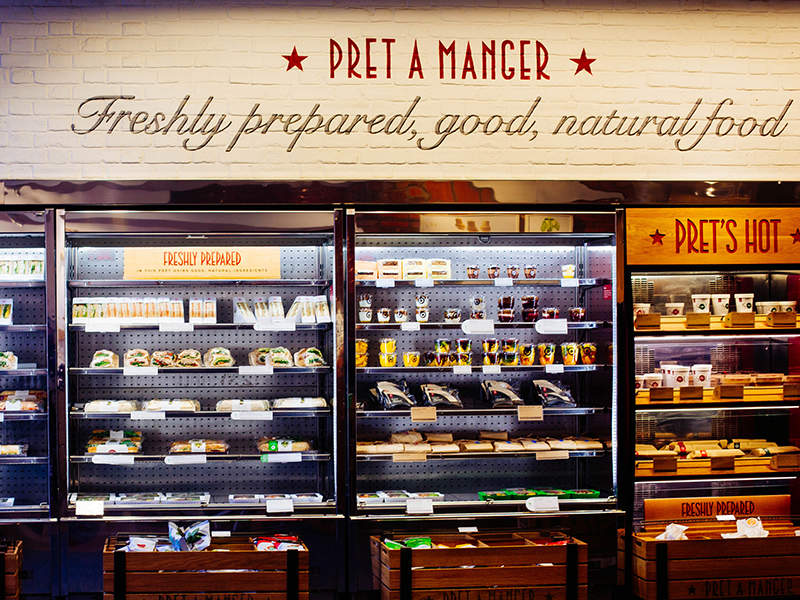
Natasha Ednan-Laperouse died in July 2016 after suffering from an allergic reaction to the sesame in one of Pret a Manger’s ‘artisan baguettes’. According to Ednan-Laperouse’s father, there was no label on the outlet’s fridge warning of potential allergens on the day she died and a photo of the branch where the product was purchased, taken eight days after her death, appears to show a fridge without an allergy sticker.
However, Pret a Manger’s head of risk and compliance Jonathan Perkins said that the company reviewed its warning notices in April 2016. Questions have been raised about whether this review came too late, as nine cases of sesame-related allergy incidents were reported in the year before Ednan-Laperouse’s death. Six of these, according to a Pret complaint log, related to ‘artisan baguettes’.
Increasing intolerance: rising hospital admissions and overlooked reactions
According to a September 2014 report from YouGov, 22% of the UK population consider themselves to have a food allergy or intolerance. Of greater concern, Trace One, a software-as-a-service platform for the retail and private label goods sector, found in late 2016 that hospital admissions for serious allergic reactions had risen by almost 75% in England in the last ten years. According to Trace One’s data, hospital admissions for allergic reactions to food will quadruple between 2015 and 2040.
A spokesperson for the Food Standards Agency told us at the time: “In the last decade, the cases of food allergies have doubled and the number of hospitalisations caused by severe allergic reactions has increased 7-fold (EAACI, 2015). Based on hospital episode data there was a 76% increase in hospital admissions attributed to food allergies between 2005-06 and 2014-15 It is possible some of this is due to better data recording but there is no way of knowing.”
Among the cases logged by Pret in the year before Ednan-Laperouse’s death, there was a near fatal incident when a woman suffered an anaphylactic reaction after eating a baguette in October 2015. Jeremy Hyam QC, who is representing the Ednan-Laperouse family, has said that Pret was given a “specific warning” by that customer’s family, but no action was taken regarding allergy information.
With trust in the food industry shaken by scandals in recent years (2015 saw recalls in the food and drink industry rise by 78%), brands can little afford to establish a precedent of untrustworthiness. Unfortunately, Pret a Manger exists in a regulatory space that creates a risk of such incidents occurring.
The labelling loophole: technically compliant, but potentially at risk
According to EU Regulations, sesame is one of 14 allergens that consumers must be informed of when it is used as an ingredient in food products. However, it is the responsibility of individual member states to decide on the method by which information about non pre-packaged food is provided to customers.
Under the UK’s Food Regulations 2014, this means that if food is freshly handmade and not pre-packaged, it does not need to be individually labelled. Pret a Manger’s current approach to this ruling has been to use signs on fridges and at till points to inform consumers with allergies to either request advice from a manager or check the company’s allergen guide.
This means Pret a Manger certainly was compliant with current UK regulation. However, the fact that there had been previous cases that, although not fatal, highlighted the same risk that led to Ednan-Laperouse’s death leads to concerns about a potential lack of regulatory oversight.
“Under the UK’s Food Regulations 2014, if food is freshly handmade and not pre-packaged, it does not need to be individually labelled.”
Perkins claimed in the inquest that each previous complaint had been responded to appropriately at the time, although those individual responses do not appear to have led to a broader reconsideration of allergen policy. The results of the inquest may serve to change that, as coroner Dr Sean Cummings has said he will be reporting to the government on how labelling regulations are applied to large food business such as Pret a Manger.
“I was left with the impression that Pret had not addressed the fact that monitoring food allergy in a business selling more than 200 million items a year was something to be taken very seriously indeed,” Cummings said.
The coroner will be making two reports related to the handling of allergen information following the inquest: one to Pret a Manger about its process for collecting information on allergic reactions and the handling of related complaints, and one to Environment Secretary Michael Gove about whether the labelling loophole should be addressed in the case of large food businesses.
However, according to Farzad Henareh, vice president at recall specialists Stericycle Expert Solutions, the UK may be facing a larger crisis, “According to the RAPEX system, over this period [April-September] there have been three times the number of complaints from other European countries about inadequately labelled British products as there has been from the UK about other countries. In fact, over the last six months almost 20% (18.5%) of complaints about labelling across the entire EU concern British products.”
There are already clear issues in the way in which labelling regulations are applied, issues that are only likely to be exacerbated following the UK’s exit from the European Union and the subsequent legislative efforts. There is already likely to be a host of trading difficulties to manage, but inadequate labelling provisions will only make things worse. It is imperative that both the government and industry work hand-in-hand to ensure that the UK’s labelling regulations are held up to the highest standards.
This piece originally appeared in Inside Food



